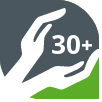FRENCH MANUFACTURER
Manut-LM is proud to be the #1 French Manufacturer of Vacuum Tube Lifting Solutions!

The entire human body can be affected by MSDs. However, the upper part characterized by joints, nerves, muscles and tendons are regularly attacked. The demonstrations are crescendo according to their gravity:
Among other TMS constantly met we have:
The lower part of the human body can also be a victim of MSDs. The knee for employees using their knees or working squatting will be the target of knee bursitis. The repetition of flexions and extensions of the ankle can follow an attack of the Achilles tendon.
The personal conditions of each employee (age, state of health, etc.) taken into account, however, it is appropriate to state that MSDs are directly caused by work arrangements. Indeed, an overexploitation of the body accompanied by a shorter recovery time generally leads to the visibility of symptoms.
There are four of them.
All these causes together cause an MSD.
Inter alia; shocks, mechanical pressures from body contact, cold, lighting and vibration add up to mechanical causes to worsen MSDs.
The appearance of MSDs among employees is also linked to deplorable working conditions, a poor distribution of work, an unfavourable environment or a hellish pace of work.
The perception of work by employees or the recognition of merit by superiors must be taken into account. Tensions related to time pressure, deterioration of relationships related to the social experience of the group or uncertainty about the job itself are all causes of musculoskeletal disorders.
MSDs have an impact on the employee. As a result, there are visible repercussions in the professional or private sector of the latter as well as on the company.
It is of several types including:
Musculoskeletal disorders are capable in the worst case of causing a total stoppage of work for the employee for long periods of time. This makes the need to avoid MSDs as much as possible for their employees paramount.
The prevention of MSDs in companies is based on certain main axes, namely; the assessment of risks in their entirety, the involvement of all layers of the company and the sharing of knowledge and skills. These preventive measures follow a very specific structural order:
The prevention of MSDs requires the involvement of the management team through:
This phase is a source of motivation and hope for employees with MSDs. However, it is only the beginning.
Here it is a question of collecting the necessary information on the health of employees and detecting workstations at risk. This action is carried out in collaboration with the health services through interviews with employees, the study of the information obtained or the implementation of the SALTSA protocol. It is also and above all a question after establishment of the presence of all causes of MSDs already listed above in order to propose the beginnings of solutions.
The prevention of MSDs takes the form of ergonomic actions with the aim of modifying working conditions with the ultimate aim of minimizing the constraints on employees. It is therefore useful for the company to use the information previously collected. The planning of this preventive action is necessary because it must not reveal any haste. Thus we will have as action:
This is possible through actions of the higher authorities of the company such as the modernization of work tools, the grouping of workers into teams and the establishment of a better organization. Compliance with NF EN ISO 14738 (X 35-104, 2008) on anthropometric requirements for the design of workstations on machines, and NF EN 12464-1 (X 90-003-1, 2011) on workplace lighting provides recommendations for the average illumination to be maintained is also to be promoted.
Instruction and information are equally important points in order to control the risks of MSDs. An employee informed about the risks involved takes precautions. Pathologies quickly diagnosed lead to lesser consequences and even less are the expenses and losses incurred by the company.
The maintenance of functional abilities requires regular physical exercises and warm-ups before starting service (for those that impact the physical).
Evaluation is included in MSD prevention modes. It is necessary that it be included from the first attempts to find a solution in order to establish follow-up guides that go hand in hand with the company’s objectives and to have feedback from employees.
The search for ways to prevent MSDs requires the involvement of all the company’s stakeholders and also the practice of ergonomics.

Manut-LM is proud to be the #1 French Manufacturer of Vacuum Tube Lifting Solutions!

Since its creation in 1987, Manut-LM offers top-quality innovative solutions

All Manut-LM products are made to measure to fit our clients needs

Our sales and technical teams are at your complete disposal to answer your needs quickly